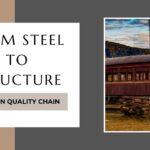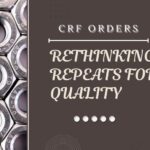Casting isn’t just pouring metal into a mold. Railway components manufacturing take loads, vibration, and weather without flinching.
The smallest flaw in a casting can trigger a sequence of faults.
What’s on the surface often tells very little about what’s inside. Those working with cast parts need to know how these defects form and what can be done to stop them.
Here’s a breakdown of what typically goes wrong:
Shrinkage Cavities Need Volume Control
Shrinkage occurs when molten steel pulls inward as it cools, leaving empty pockets. These often form near thicker sections or angles.
Once hardened, they reduce strength where it’s needed most.
To prevent this, patternmakers modify the geometry and add feeders that keep molten metal flowing into those zones as they cool.
Smart gating design, riser placement, and temperature simulation help guide that work before the first pour.
Porosity Comes from Trapped Gases
Tiny pockets inside steel often form when gas fails to escape during solidification. These internal voids don’t always show on the surface, but they disrupt load paths and reduce durability.
Porosity tends to build up when mold moisture rises or molten metal enters too forcefully.
Factories work around this with clean mold preparation, tight venting, and low-turbulence gating.
Holding pour temperatures steady also limits gas pickup and gives trapped air time to escape.
Dimensional Errors Start with Pattern Work
Not all defects are about cracks or pores. Sometimes the part looks perfect, until it doesn’t fit.
Shrinkage allowance, pattern wear, and uneven cooling can warp the final shape. Factories with in-house patternmakers can adjust dimensions precisely for each project.
Digital scanning and hard gauges help catch variations before the part reaches assembly.
Misruns and Cold Seams Show Up as Weak Points
If the metal cools too quickly or flows too slowly, it can stop short of filling the mold. Where two fronts meet but don’t fuse, a cold seam forms. That seam acts like a crack once the component goes into service.
Factories avoid this using higher melt temperatures and steeper fill angles.
Speed and sequence matter here, so mold geometry and pouring discipline work together to keep the metal moving until the cavity fills fully.
Inclusions Are Physical Contaminants
Foreign particles like slag, sand, or oxides embedded in a casting are known as inclusions.
These interrupt the internal structure and introduce brittleness. They’re often caused by poor melt handling, mold breakdown, or bad pouring technique.
Factories prevent them with clean charge materials, well-maintained molds, and consistent ladle practices. Operators keep an eye on the melt and the mold surface before every run.
Hot Tearing Starts at Transition Points
When cooling rates vary too much across a part, internal tension can pull it apart. This often happens in castings with sharp transitions or variable wall thickness.
The tear usually begins as a thin surface line, then grows with repeated load cycles.
To prevent this, foundries use fillets, preheated molds, and directional solidification to reduce internal stress. Smooth geometry makes just as much difference as metallurgy.
Surface Defects Disrupt Finishing
Surface roughness, scale, and scabbing aren’t just visual problems. They interfere with welding, coating, and machining downstream.
Mold quality and surface treatment affect how clean the casting comes out.
Consistent compaction, proper venting, and thermal control all factor into producing smoother finishes.
Post-casting inspection and surface dressing take care of anything that escapes early detection.
Final Thoughts
Strong castings don’t happen during the pour. They begin with preparation, prediction, and precise control of every variable.
Foundries that get this right don’t just reduce defects; they enable downstream teams to build faster and run longer. That’s what drives our casting division forward.
We tune our practices to support structural reliability across batches and applications.
If you’re sourcing cast components for rail, we’d be glad to help you spec what works. Get in touch with us today.





